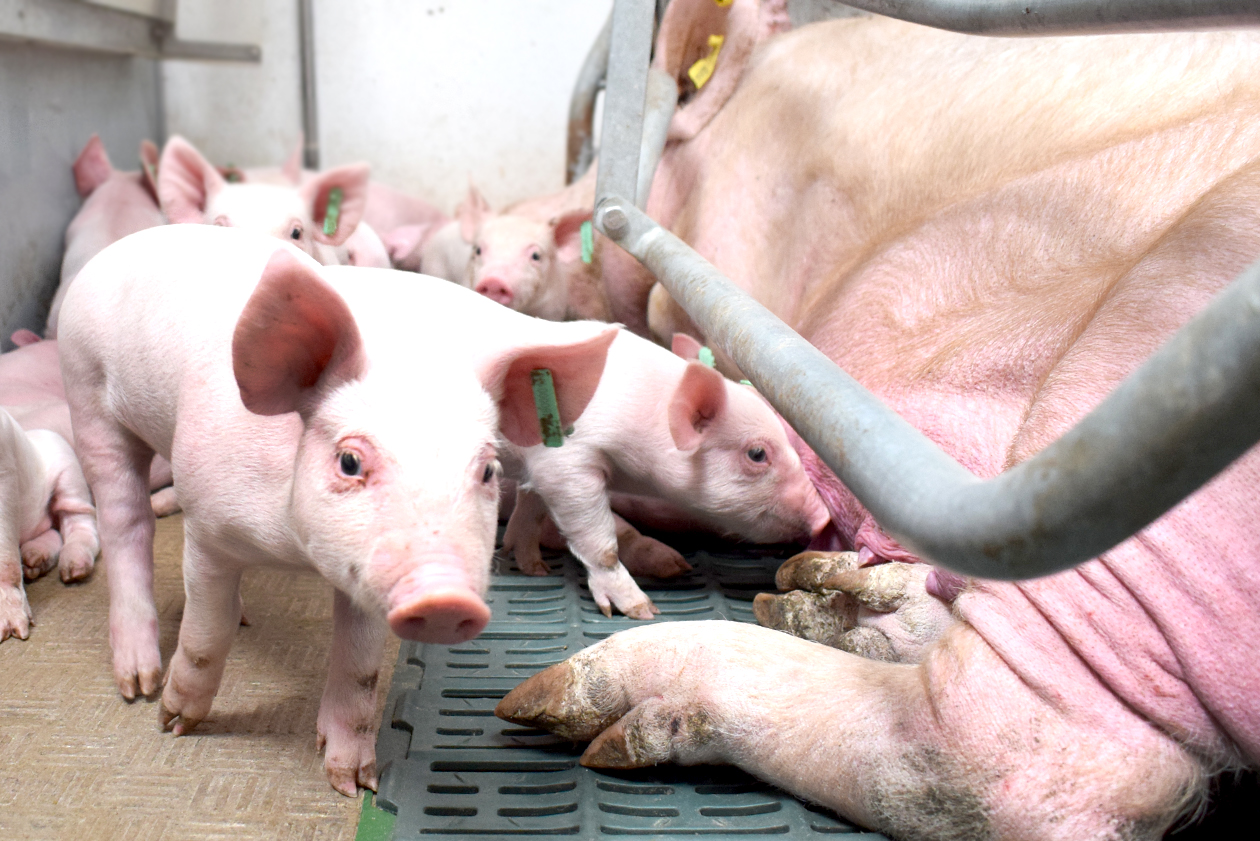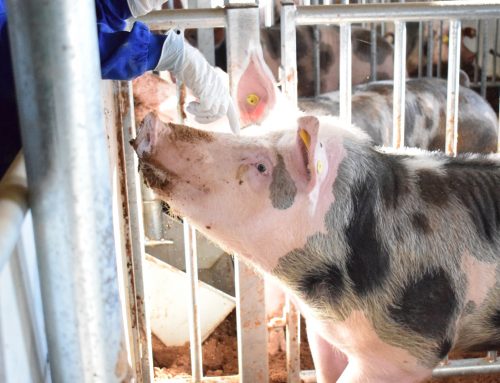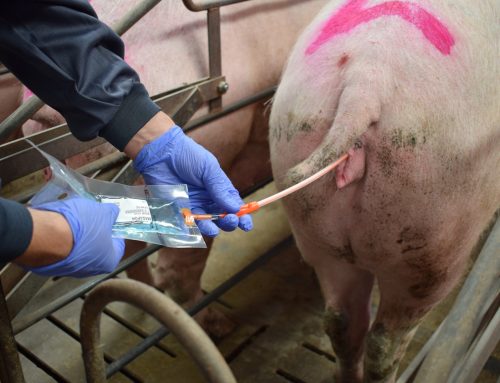In this blog post we will talk about different tips to stimulate sows coming into heat correctly. For this it is important to know the estrus cycle of the sow, which we already discussed in a previous entry, and will help us to understand the different management strategies and actions that are carried out to achieve an optimal good return to oestrus.
Internal averages of weaning – heat > 6.5-7 days shall be indicative that there is a delay in the sow coming into heat.
All recommendations will be aimed at achieving a stable sow coming into heat throughout the year, since in times such as summer, due to the set of consequences that lead to high temperatures, this interval will be increased.
The reproductive function is intimately linked to a series of external factors that affect it directly or indirectly and on which we must act to achieve the highest possible reproductive performance. These factors may be dependent on the environment, but the vast majority are related to the daily management of the sows, both during the lactation period and during the post-weaning period.
Environmental factors
Temperature: it is well known the influence of temperature on the physiological state of the breeders, since swine is a specie that has less mechanisms of adaptation to extreme temperatures, based mainly on behavioral strategies. The thermoneutral zone for the breeders ranges between 12 and 25ºC, being maximum comfort between 16 and 20ºC. Above 25ºC the sows will begin to decrease their feed consumption, causing a decrease in productive performance. Some of the parameters that we can see affected are decreased fertility, presence of a greater number of silent heat, later heat and therefore a greater weaning-heat interval, as well as repetitions, embryonic reabsorptions and abortions among others. In addition to a correct temperature, it is also worth highlighting the importance of ventilation and relative humidity systems, which should be less than 65%.
Light: although the influence of the photoperiod in females housed in intensive systems is very small, the amount of light that affects the breeders becomes important, being recommended to provide 16 hours of photoperiod and about 250 lux. For this it is suggested to have 150 W light sources every 1.5 meters. It is interesting to keep the cover of light sources clean so that the depth of light emission is optimal.
Both factors affect most significantly during the summer season, where moments of high temperatures are combined with the beginning of the decreasing photoperiod. To minimize its effect, we can resort to different management-based strategies to reduce the its effects, starting with proper ventilation and cooling. Regarding the nutrition, it is important to distribute the ration throughout the day if it is dosed by the operators, while with the systems that have appeared in the last 5-7 years, there is already the possibility of the provision of feed ad libitum. We must not forget the importance of fresh water, which must be available ad libitum in compliance with biochemical and microbiological quality standards.
Management factors
The management of the breeders during the lactation period influences their coming into heat. We highlight three aspects about the management within this period: the intake of food, the duration of the lactation and the management of the litter.
Adequate intake of feed during the lactation period is one of the most important points to maintain the breeder health during this period. Many studies have shown the positive effects of maximising feed intake during lactation. As can be seen in Table 1, it shows that high levels of lactation feed intake reduce the loss of body weight, increase the daily gain of the piglet and reduce the weaning-heat interval. The consumption of feed during lactation depends on multiple factors (environment, facilities, body condition at birth, genetic, health status, and management). In addition, an inadequate energy supply during lactation will mainly affect gilts, since they must attend to the physiological expense of their own growth and milk production. As we well know these sows are the future of the farm and a bad management in its first lactation can condition its production in future births.

Table 1: Effect of feed consumption in lactation on the weaning-heat interval, loss of weight of breeders and average daily gain of the piglet. (Adapted from: PIC 2006 Nutrient Specifications Manual)
As for lactations below 16 days, they do not allow the uterus to involute properly. Finally, the litter management can affect both the reproductive state and the energy expenditure, when the sow must take care of very numerous litters or with piglets with large size, they will require a higher expense of milk production. Also in the case of very large litters, double weaning is very common, where larger piglets are removed, leaving a lower number of piglets with a smaller size, causing prolactin levels to drop and allowing the sow to come in heat in the maternity ward. Controlling these three factors is key to obtaining a good weaning-heat interval in the farm.
With regard to the selection in maternity of the breeders who will continue in the farm after weaning, it is important to carry out a correct screening, in this way we reduce delays in coming into heat or problems of repetition or embryonic reabsorption, consequence of the presence of “problem sows” among the group of inseminated sows.
As we carry out the weaning process, it is important to carry out a post-weaning flushing, which consists of keeping the weaned sow at high intake and high energy feed levels during the first days after weaning. This will allow the sow to begin to recover from the loss of reserves suffered during lactation by maximizing the ovulation rate and therefore the litter size in the next calving. In addition, both management protocols have proved useful to reduce the number of non-productive days, which translates into a greater number of litters per year.
Regarding the weaning area, it is common to find adapted areas in old farms, or already designed in newly built farms, known as “erotic zones”. This part of the farm aims to bring the weaned sows to a cleaned area between batches, in which a perfect environment is created for coming into heat in the sows and its detection. These are areas that are characterized by allowing us “certain luxuries”, such as air conditioning, placement of light points above the cages, door systems to detect heat, individual water points and even ad-libitum feedings systems through which you can get lactation feed, also with supplements that promote follicular growth and an optimal get into heat. At this time, it is important to initiate contact with the boar, to start hormonally stimulating the breeders. Both the suitable environment and the hormonal influence of the male will facilitate the coming into heat of the breeders.
So far the new blog post. We have commented on some of the tips and measures that can be taken to optimize and maximize the breeders coming into heat, and thus avoid the increase of the dreaded “non-productive days”. It should be noted that there are many other strategies that have not been discussed due to their complexity and extension, such as the management guidelines with hormonal treatments or nutritional strategies during lactation, weaning and early pregnancy. Neither has it been discussed the strategies to optimize a good return to oestrus in gilts, for the same reason as the previous topics discussed. In the next blog posts we will talk about suspicion protocol and insemination time.
We hope this tips will help you!
BIBLIOGRAPHY
Close, W.H. The role of feeding and management in enhancing sow reproductive potential. Proceedings of the 2003 London Swine Conference, 9-10, April,2003
PIC. 2006. Nutrient Specification Manual.
Quiles, A., Hevia, M.L. Estrategias para luchar frente al estrés por calor en cerdas reproductoras. Producción animal, 296 may 2016: 36-42.
https://www.3tres3.com/articulos/deteccion-de-celo-ii_1731/
https://www.pig333.com/articles/tips-for-heat-detection-in-gilts-and-sows_15469/



